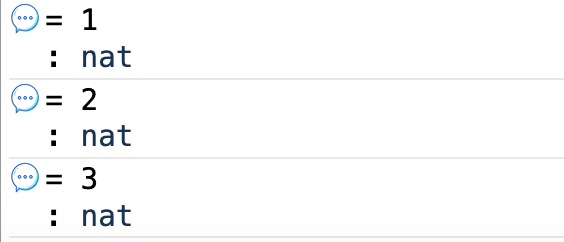I was learning Coq for fun, hoping someday that I would prove some theorems(JK). While learning Coq, specifically pattern matching, I stumbled upon this definition named minustwo. As the name suggests, it subtracts 2 from the number you provide but with some cases. Let’s look at the definition to understand more.
DISCLAIMER: I’m not an expert in Coq, I’m just experimenting
Definition minustwo (n: nat): nat := match n with | O => O | S O => O | S (S m) => m end.
Let’s breakdown the above code.
We have created a definition which in imperative languages we call them functions. The name of the definition is minustwo, which takes one argument n of type nat (short for Natural number).
The body of the definition contains a match statement. In Coq, we use match statement for pattern matching. You can think of match as switch case in other languages, but not exactly the same.
We have three cases:
- If n is O, return O
- If n matches with S O, return O
- If n matches with S (S m), return m
O represents capital “O” and not numeral “0”. In Coq, both represents the same thing. We can replace “O” with “0” as well.
But, what is S O? What exactly is S ? S is short for Successor which is a constructor in Coq(in-built). We can look at the signature of S by executing this command: Check S. Which gives us:

This states that S takes in a natural number(nat) and returns a natural number(nat). So,
S O.returns 1S 1.returns 2S 2.returns 3- and so on. We can check that by executing
Compute S n, replace n which a natural number

Instead of doing S O, S 1, S 2 and so on. We could also do something like:
S (S O)which returns 2S (S (S O))which returns 3S (S (S (S O)))which returns 4S (S (S (S (S O))))which returns 5
Now that we know what S is, and what it does, let’s go back to original code.
Executing minustwo
How can we execute(call) minustwo? We can use the Compute vernacular which Coq provides. We can do something like:
Compute minustwo 0. (* returns 0 *) Compute minustwo 1. (* returns 0 *) Compute minustwo 2. (* returns 0 *) Compute minustwo 3. (* returns 1 *)
Let’s take a look at the first statement Compute minustwo 0. Essentially, we are passing O to minustwo definition.
match n with | O => O | S O => O | S (S m) => m end.
By looking at the body of the definition, we are handling the case for O , which is O => O. That is why when we pass O it returns O.
For, Compute minustwo 1 , we are passing 1 to the minustwo definition, we are handling the case for 1, which is S O. As we know, S O = 1. This case will match and it returns O.
For, Compute minustwo 2, we are passing 2 to the minustwo definition. For this case, we don’t have any direct case. What we have is S (S m) ⇒ m. So how does this work?
When we pass 2, under the hood, Coq transforms 2 to S (S O). So if we match this with the pattern in our case, it looks something like:
S (S O) = S (S m)
In our match case, we are returning m if the pattern matches to S (S m). But what is m? If we look at the above analysis S (S O) = S (S m) , in the place of m we have O on LHS. So we’ll be returning O as the result which is exactly what we needed. Because 2 - 2 = 0. Let’s do 5 - 2 now and see how it works.
5 - 2
Compute minustwo 5. When we run this command we expect the output to be 3. Let’s breakdown. As we know, Coq represents 5 under the hood as,
5 = S (S (S (S (S 0))))
So, let’s match this with our case:
S (S (S (S (S 0)))) = S (S m)
=> S (S (S (S (S 0))))
m => S (S (S 0))
m matches with S (S (S 0)) which when reduced we get 3. That is exactly what we want, because 5 - 2 = 3. The reduction happens like:
m => S (S (S 0))
=> S (S 1)
=> S 2
=> 3
Conclusion
I was struggling to understand this for the past couple of hours before starting to write this post. I was finally able to grasp the concept after delving into the minustwo example and experimenting with different inputs. Through this journey, I gained a deeper appreciation for the elegance and power of pattern matching in Coq. It's amazing how a seemingly simple construct can unlock so much potential in our code.